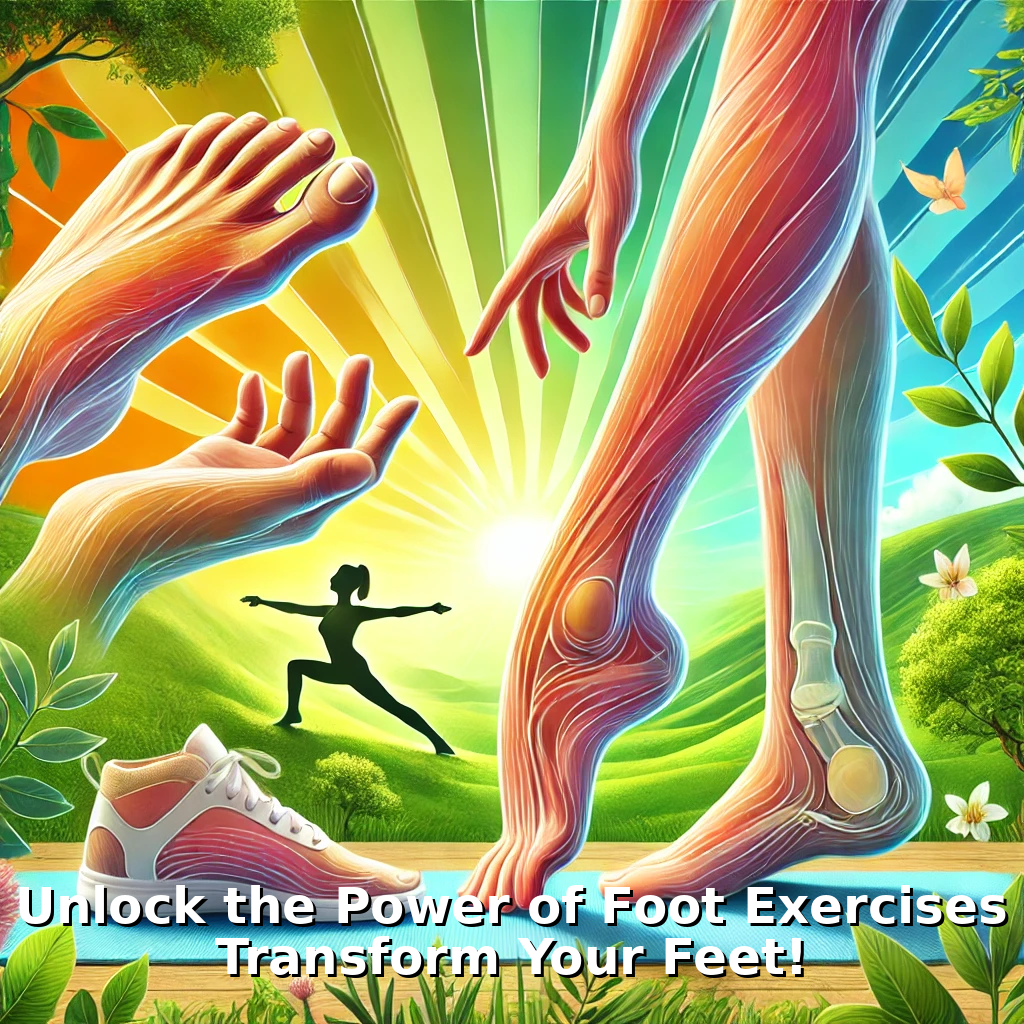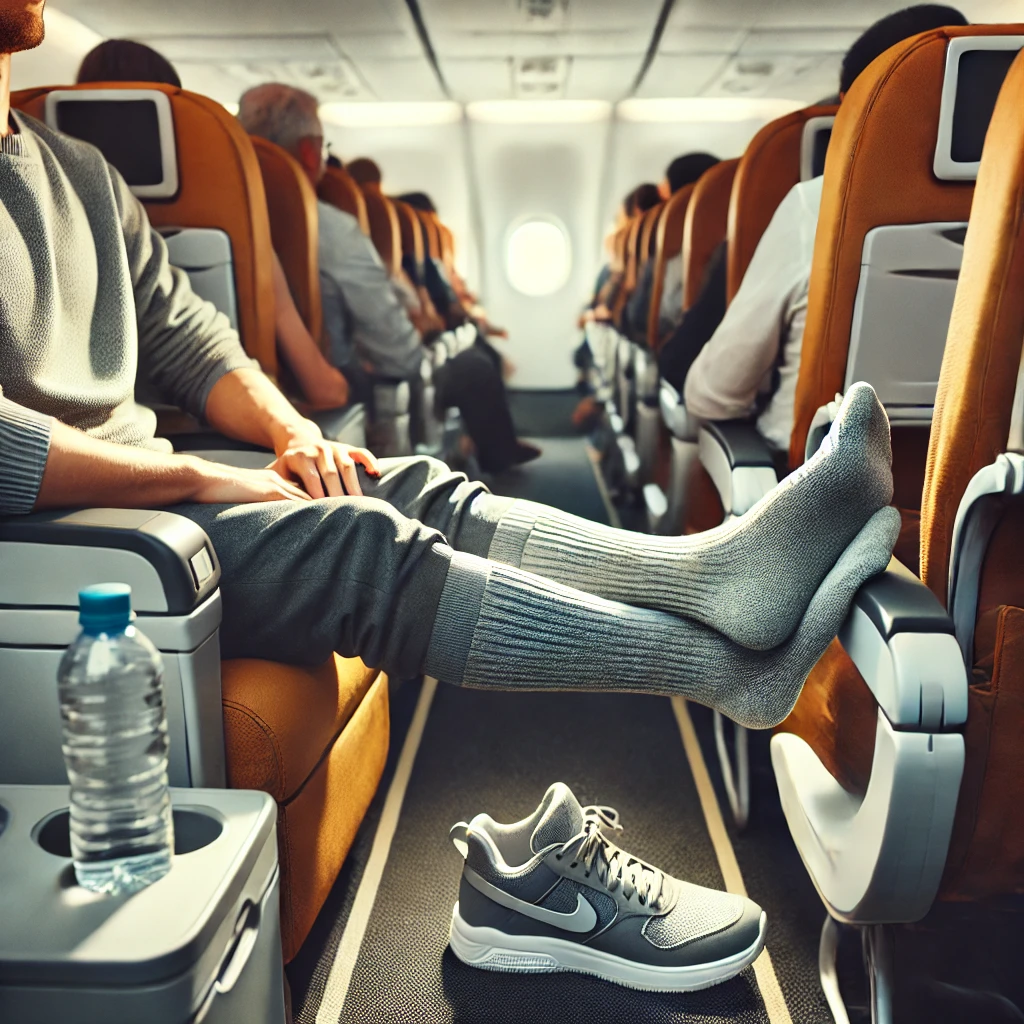Your feet are the foundation of your body. They support your weight, facilitate movement, and connect you to the ground. However, foot strength is often overlooked until problems arise. Foot exercises play a vital role in maintaining healthy feet, enhancing mobility, and preventing injuries. Let’s explore the benefits, types, and routines to keep your feet strong and pain-free.
Understanding the Importance of Strong Feet
Anatomy of the Foot and Its Functions
The human foot is a marvel of engineering, with 26 bones, 33 joints, and over 100 muscles, tendons, and ligaments. These structures work together to provide support, absorb shock, and propel you forward. Weak or neglected feet can lead to imbalances, pain, and reduced mobility.

How Strong Feet Improve Overall Mobility
Strong feet are essential for proper alignment and posture. They enhance your ability to walk, run, and balance, reducing the risk of falls and injuries. Whether you’re an athlete or someone who spends hours on their feet, maintaining foot strength is critical for overall well-being.
Benefits of Strengthening Your Feet
Enhanced Stability and Balance
Strengthening your feet improves your balance by stabilizing your body. This is particularly beneficial for older adults, as strong feet can reduce the risk of falls and associated injuries.
Prevention of Common Foot Problems
Many foot problems, such as plantar fasciitis, bunions, and flat feet, stem from weak or inflexible muscles. Regular foot exercises can prevent these issues by keeping your feet flexible and strong.
Better Athletic Performance
Athletes rely heavily on their feet for speed, agility, and power. Strong feet provide a solid foundation for explosive movements and help prevent sports-related injuries, such as sprains and strains.
Common Foot Problems and Their Causes
Plantar Fasciitis
Plantar fasciitis, characterized by heel pain, is often caused by overuse, poor footwear, or weak foot muscles. Targeted exercises can alleviate pain and prevent recurrence.
Bunions and Corns
Bunions and corns develop due to pressure and misalignment. Strengthening and stretching exercises can ease discomfort and slow progression.
Flat Feet
Flat feet occur when the arch of the foot collapses, leading to pain and instability. Exercises that strengthen the arch muscles can provide relief and improve foot function.
Types of Foot Exercises
Stretching Exercises
Toe Stretch
Sit on a chair and use your hands to pull your toes gently backward. This stretch improves flexibility in the toe joints and relieves tension in the arch.
Arch Stretch
Stand on a step with your heels hanging off the edge. Lower your heels slowly to stretch the arch and Achilles tendon.
Strengthening Exercises
Toe Curls with a Towel
Place a small towel on the floor and use your toes to scrunch it up. This exercise targets the arch muscles and improves grip strength.
Heel Raises
Stand on both feet and lift your heels off the ground, balancing on your toes. This strengthens the calves and the stabilizing muscles in the feet.
Mobility and Flexibility Exercises
Ankle Rolls
Sit comfortably and rotate your ankles in circles, first clockwise and then counterclockwise. This improves joint mobility and circulation.
Walking on Sand or Grass
Walking barefoot on natural surfaces strengthens the muscles and improves sensory perception in the feet.
Foot Exercise Routines for Different Needs
Exercises for Beginners
Starting with foot exercises doesn’t require fancy equipment or rigorous effort. For beginners, it’s about getting accustomed to regular movement and strengthening the smaller muscles in the feet.
- Toe Spreading:
Sit on a chair and try to spread your toes apart as wide as possible. Hold this position for 5–10 seconds, then release. This improves flexibility and strengthens the muscles supporting the arch. - Heel and Toe Walks:
Walk around your living room on your toes, then switch to walking on your heels. This improves balance and engages multiple muscle groups in the feet and lower legs. - Tennis Ball Roll:
Roll a tennis ball under your feet for 2–3 minutes per foot. This stimulates circulation, stretches the arch, and relieves tension. - Alphabet Tracing:
Sit down and use your big toe to trace the alphabet in the air. This improves ankle mobility and foot control.
Exercises for Athletes
Athletes often demand more from their feet, making targeted exercises critical for peak performance.

- Toe Taps:
Tap your toes rapidly while keeping your heels on the ground. This enhances speed, coordination, and muscle endurance in the feet. - Resistance Band Foot Press:
Wrap a resistance band around the ball of your foot and pull it toward you. Press forward with your toes, mimicking a push-off motion. This strengthens the arches and stabilizing muscles. - Box Jumps or Step-Ups:
Perform explosive box jumps or step-ups to build power in the feet and ankles, crucial for sports that involve running or jumping. - Single-Leg Balance Drills:
Stand on one foot and practice balancing for 30–60 seconds. To add intensity, try balancing on an unstable surface like a wobble board.
Exercises for Seniors
For seniors, maintaining foot strength and flexibility helps prevent falls and improves mobility.

- Seated Toe Lifts:
Sit in a chair with your feet flat on the floor. Lift your toes while keeping your heels grounded. This builds strength in the front of the foot. - Arch Lifts:
While seated, press your big toe and heel into the floor while lifting the arch. Hold for 5 seconds and release. This helps combat flat feet. - Heel-to-Toe Rocking:
Gently rock from your heels to your toes in a standing position. This exercise improves circulation and balance. - Slow Ankle Rolls:
Rotate your ankles slowly in both directions to keep the joints flexible and reduce stiffness.
Tips for Effective Foot Exercises
Choosing the Right Footwear
Proper footwear is essential for effective foot exercises. Shoes should have adequate arch support, cushioning, and flexibility to avoid strain. For exercises like barefoot walking or stretching, ensure a safe, clean surface to reduce injury risk.
Incorporating Foot Exercises into Daily Life
Make foot exercises part of your daily routine. While brushing your teeth, perform heel raises. During TV time, try toe curls or ball rolls. Consistency ensures better results without dedicating extra time.
Common Mistakes to Avoid
- Skipping Warm-ups:
Always warm up your feet with gentle stretches before intense exercises to avoid strains. - Overtraining:
Doing too much too soon can lead to injuries like tendonitis. Gradually increase intensity. - Ignoring Pain:
Stop any exercise that causes discomfort and consult a specialist if the pain persists.
Tools and Accessories to Enhance Foot Strength
Resistance Bands
Resistance bands add intensity to foot exercises like toe presses or ankle strengthening drills. They are versatile, portable, and effective for building strength.
Foot Rollers and Massage Balls
Foot rollers and massage balls are excellent for relieving tension, improving circulation, and reducing discomfort. They target the fascia and muscles, aiding recovery after workouts.
Orthotics and Insoles
Custom orthotics and supportive insoles can align the feet and redistribute pressure, especially for individuals with flat feet or plantar fasciitis. Use them in your regular shoes to complement your foot exercise routine.
How to Monitor Progress
Tracking Improvement in Balance
Improved balance is one of the first signs of progress. Test yourself by balancing on one foot or standing on an unstable surface.
Reduced Pain and Discomfort
If exercises target specific foot problems like plantar fasciitis or bunions, you should notice a decrease in pain after consistent practice.
Increased Flexibility and Strength
Assess your ability to perform more challenging exercises, such as heel raises or single-leg drills. Enhanced flexibility in toe and ankle movements is also a good indicator.
Myths About Foot Strengthening
“Foot Exercises Are Only for Athletes”
Foot exercises benefit everyone, from kids to seniors, by improving balance, preventing injuries, and enhancing overall mobility.
“Strong Feet Don’t Need Special Attention”
Even strong feet need maintenance to avoid issues like tightness, overuse injuries, or misalignment.
“Foot Problems Are Inevitable with Age”
Aging doesn’t mean foot problems are guaranteed. Regular exercises, proper footwear, and attention to foot health can maintain strong, functional feet for life.
When to Seek Professional Help
Recognizing Signs of Serious Foot Issues
Persistent pain, swelling, or difficulty walking may indicate a serious problem. Seek medical advice if symptoms persist despite exercises.
Role of Podiatrists and Physical Therapists
Podiatrists and physical therapists can provide tailored treatment plans, assess foot alignment, and recommend specialized exercises for your needs.
Combining Professional Guidance with Exercises
Professional recommendations paired with at-home exercises create a comprehensive approach to foot health, especially for chronic conditions.
Conclusion: The Path to Healthy and Strong Feet
Foot exercises are simple yet powerful tools for maintaining foot health. Whether you’re a beginner, an athlete, or a senior, incorporating these exercises into your daily life can improve balance, prevent injuries, and enhance overall mobility. Prioritize your foot health to stay active and pain-free for years to come.
Frequently Asked Questions
1. What are the best exercises for foot strength?
Toe curls, heel raises, and resistance band toe presses are among the best exercises for building foot strength.
2. How often should I do foot exercises?
Aim for 3–5 times a week to see noticeable results, but adjust based on your comfort level and goals.
3. Can foot exercises help with plantar fasciitis?
Yes, targeted exercises like toe stretches and arch lifts can relieve pain and improve mobility in plantar fasciitis.
4. Are there any risks to doing foot exercises?
Overdoing exercises or ignoring pain can lead to injuries. Always start slow and consult a professional if needed.
5. Do I need special equipment for foot exercises?
Not necessarily. While tools like resistance bands and massage balls can enhance your routine, many exercises require no equipment at all.










